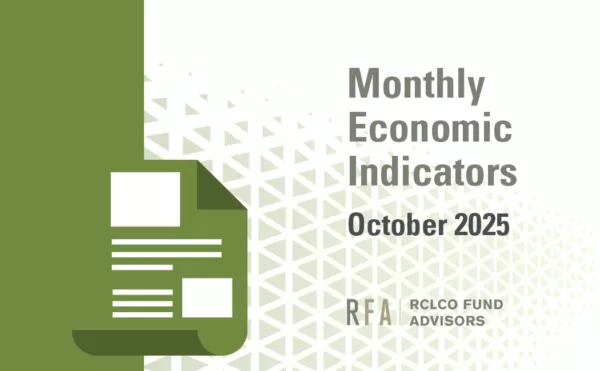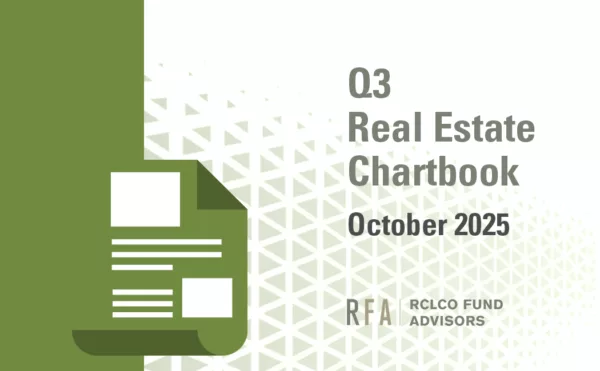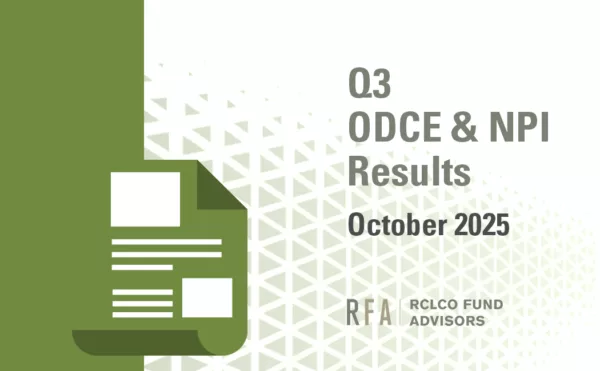
November 13, 2024
Originally published via PREA
Much has been written about the fees and costs associated with investing in private markets, such as private equity and real estate, particularly relative to investments in the public markets. One rationale in support of private markets fees is that fees are high because costs (e.g., search and acquisition) are high and they incorporate contingent payments to sponsors that successfully incentivize outsize returns, leaving investors better off than if they invested in alternatives.
Although evidence may support that view for private equity in general, there are doubts that it is the case for private equity real estate closed-end funds. Numerous studies have shown that, on average, closed-end real estate funds have not delivered acceptable risk-adjusted returns relative to alternative opportunities.
We recently summarized relevant research on this topic in “Academics Question the Value of Private Real Estate Funds: What’s an Investor to Do?” [1] published in the Fall 2023 issue of the PREA Quarterly.1 That article also provided recommendations regarding alternative investment approaches that avoid or minimize the shortcomings of private equity real estate closed-end funds, including direct investment, coinvestment, the addition of leverage to core funds, and REITs.
Given that surveys show that closed-end funds remain a mainstay investment product for many institutional real estate programs, their use and prevalence is likely to remain strong for the foreseeable future. This article looks at the fees charged by those funds and suggests changes that could result in improved alignment of interests and better risk-adjusted returns for investors.
Summary
PREA conducts a comprehensive Management Fees & Terms Study every other year, with the latest report published in 2022. This is an important industry resource that provides details and transparency on fees charged by commingled funds, broken out by factors such as structure, style, and focus areas.
Based on that data and RCLCO Fund Advisors’ experience in underwriting hundreds of commingled funds, we offer the following observations and recommendations regarding non-core fund fees and terms:
- Hurdle rates should be based on unleveraged returns. Leverage can and does distort manager incentives to the disadvantage of investors.
- Hurdle rates should be based on alternative low-risk real estate investments, not some arbitrary level, such as 8% on leveraged returns. Most forecasters and actuaries believe that unleveraged core real estate delivers average annual returns of 6% to 8% after fees over the long term. We propose 6% as the minimum level for unleveraged hurdle rates.
- Catch-up provisions should be eliminated.
- Asset management fees should reflect significant economies of scale realized by larger funds. Larger funds should offer lower base management fees than smaller and sometimes less well-capitalized funds.
- Subscription lines should be used only for short-term liquidity needs, not as a way to manipulate internal rates of return results (and promote payments).
We realize these recommendations will be controversial and resisted by many fund managers. However, despite likely resistance, investors should strive to negotiate a stronger alignment of interest based on the investment strategy and property fundamentals versus the use of financial engineering or leverage. This should lead to better property selection, disposition decisions, and rewards based on actual asset performance.
The History of Private Equity Fees
Students of financial history trace the basic compensation structure of private equity investing to the rise of Venice as a merchant power close to 1,000 years ago.[2] The citystate of Venice occupied a strategic seaport location and was the primary connection between Europe and the prosperous Levant and Silk Road. To grow their seafaring, trading economy, innovative Venetian financiers in the tenth century instituted a form of contract known as the colleganza to align the interests of capital (wealthy investors) and its partners (ambitious, seafaring merchants).
Investors with capital to acquire goods for export and to purchase imports contracted with traveling merchants with the ambition and skill to risk shipwrecks, piracy, and plague, and market forces to transport the goods and execute transactions in foreign ports. To align interests, the colleganza specified how any profits were to be split. Investors gained confidence that the merchant would not run off with a shipload of Italian wine or Turkish silks and spices, and the merchant felt adequately compensated for the dangers of medieval shipping. In any event, the merchant got paid only in proportion to the investor’s success.
From there, similar challenges and risks led to similar structures being used throughout the European era of colonization. This is likely when 20% was established as a benchmark for how much an investor should share with an operator for taking on the risks of carrying goods (presumably, the origin of “carried interest”).[3] Investors in American whaling ships employed carried interest and supported sailors’ livelihoods during voyages through payment of modest expenses.
The evolving energy sector—moving from whale oil to petroleum in the late 19th century—continued to employ the concept of carried interest in supporting speculative oil exploration. Eventually, in the 20th century, the entire field of private equity, including real estate, adopted carried interest with management fees as the primary compensation model.
Rewards Untethered from Risks
For hundreds of years, the concept of carried interest has created unquantifiable fortunes for risk-taking businesspeople, and this powerful driver has capitalized economic growth that has very literally built nations. It is clearly a powerful incentive that spreads wealth and encourages risk-taking and innovation.
Today, however, as close observers of the fees and structures of private equity real estate vehicles, we believe that the concept has become detached from its original intentions, particularly in commingled funds, and especially in real estate.
Carried interest is inherently supposed to reward the undercapitalized partner for taking on the most risk— historically, mortal risk—in the enterprise. The same cannot be said for real estate partnerships today. The gap between what early entrepreneurs had to risk and endure to earn 20% of the profits and what fund managers must risk today for their share of profits is disproportionately large. It is hard to imagine that private equity would be such a popular occupation with a mortality rate of 1% to 2% (among other deprivations).[4]
Investors were historically willing to undertake greater financial risk—both sharing losses and realizing a lower share of the returns in successes—when their partners were willing to undertake far greater physical risk. In today’s compensation model, however, investors undertake greater financial risk with no corresponding trade-off for investment managers.[5] Investors and their managers (assuming they contribute a portion of the investment equity) share the same risk of loss, but investment managers have far greater upside should an investment be successful. The resulting distribution of returns creates misalignments of interests between investors and managers, incentivizing managers to incur greater risk in the hope of benefiting from their purely upside options.
On top of this, the historical concept of a modest allowance paid by the investor to support life during the commercial enterprise has evolved to remove all or a significant portion of whatever risk remained to the investment manager. High asset management fees, especially on large funds, coupled with low contributions by investment managers, particularly at scale, have become economic drivers in investment management businesses, with the opportunity to earn carried interest potentially serving primarily as a lucrative upside.
The private equity industry argues in favor of this arrangement by claiming that large financial rewards attract skilled investment teams that can generate higher returns for investors compared with those of alternative strategies. Although this might be true in some areas of private equity, a growing body of evidence suggests that real estate private equity commingled fund managers, in aggregate, cannot make this same claim. The result is an irrational situation in which real estate fund managers underperform relative to safer approaches to investing, undertake less risk than their investors, and earn higher returns.[6]
What Can Be Done?
We could argue that the entire concept of carried interest, let alone profit-generating fees, is inapplicable to enterprises in which no one is at risk of piracy, scurvy, or shipwreck, but we recognize that that ship has probably left its port for now. It is also impossible for any single investor to move the market, though we encourage investors to pick up the mantle from their Venetian doge forebears and work toward structures that better align interests.
In addition, as we discussed in our prior article, more direct forms of investing—separate accounts, joint ventures, direct real estate ownership—provide investors with greater leverage to secure superior alignment and equity.
Even indirect investors, however, can and should argue for improvements as to how managers are compensated within commingled funds. The following list of potential approaches and changes to current practices may not make us popular at the next PREA conference cocktail hour but should provide important incremental improvements to today’s economically inefficient model.
Coinvestment
To more convincingly make the claim that an incentive structure aligns interests between the manager and the investor, managers should make a more meaningful coinvestment from their own balance sheets. Profitable asset management fees should not mitigate a manager’s pain from equity loss in unsuccessful funds or ventures. More-established managers should provide coinvestments that exceed asset management and other fees by several orders of magnitude; newer, undercapitalized managers may not be able to provide as much coinvestment but should have significant personal capital at risk (to be verified in due diligence) and earn minimal profits from any fees.
Leverage
Many observers of private equity investing comment that real estate gets leverage backward. Higher leverage should be used for low-risk core assets with relatively secure cash flows, and lower leverage should be used for higher-risk transitional and development assets. This is how most of the private equity world utilizes leverage. The two primary arguments for higher leverage are that it allows for greater diversification within a fund and provides a “free” put if an asset’s value falls below the loan value.
As for the diversification argument, studies show that the increased volatility resulting from leverage more than offsets the positive impacts of more properties and tenants. All things being equal, greater volatility leads to higher expected promote payments to managers and lower net returns to investors.[7]
And though free puts (e.g., handing keys to the lender) of trophy office buildings have recently been in the news, higher leverage levels and less-secure income streams are almost always accompanied by higher interest rates and more restrictive borrowing terms.
Finally, we note that many institutional investors themselves can secure more efficient and favorable forms of debt than their smaller general partners,[8] and we recommend this strategy for consideration. For these reasons, we recommend that hurdle rates should be based on unleveraged returns, removing the incentive for investment managers to increase leverage in order to exceed hurdle rates.
Hurdle Rates
Hurdle rates have been fixed at close to 8% (on leveraged returns) for decades, without regard for how returns from alternative investments (opportunity costs) vary over time. They make some sense in that ~8% is a common required or assumed rate of return for many institutional real estate allocations. However, it is not reflective of either alternative investment options or the relative risk of real estate in general and specific funds in particular. Although relative measures (e.g., inflation plus, NCREIF Property Index, open-end diversified core equity) are potential hurdle rates, they are unknowable at the outset and thus can create unintended consequences.
Most forecasters and actuaries believe that unleveraged core real estate will deliver average annual returns of 6% to 8% after fees over the long term. Consequently, we propose 6% as the minimum level for unleveraged hurdle rates. With leverage taken out of the equation, we are open to secondary hurdle rates that reward excellent property- and portfolio-level performance.
We could argue for higher unleveraged hurdle rates based on past core real estate performance relative to risk-free Treasuries. Over the past 20 years, unleveraged core real estate (NPI) has delivered a total return of 7.6%,[9] equating to a 4.7% premium to the ten-year US Treasury note over that time. Assuming core fees of 80 basis points [10] and adding the historical premium to the current ten-year Treasury rate (~4.2% in mid-October 2024) produces an expected/required return of 7.5% to 8% for unleveraged core real estate. However, this would be a drastic change compared with current practice.
Carried Interest (Promote)
Private equity has largely used the “2 and 20” convention in setting management fees and carried interest levels. In our view, real estate has much less upside than other private equity strategies and does not warrant such high fee levels. We discuss management fees below, but we also argue that 20% is excessive for real estate investing.
Base Management Fees
According to PREA, base management fees average close to 150 basis points on committed equity for both value-added and opportunistic funds. We recognize that managers have basic fixed costs, such as salaries (pre-bonus) and rent, that get paid out of base management fees. We believe that there are meaningful economies of scale in the investment management business, and the relative costs to run a $5 billion fund are much lower than for a $300 million fund. Managers of large funds should share some of these economies of scale with their investor limited partners and generate business profits from the success of their investments.
Catch-Up Provisions
According to PREA, 76% of value-added funds and 100% of opportunistic funds have catch-up provisions whereby managers receive an outsize share of returns after investors achieve a specified return (usually the hurdle rate). In our view, catch-up provisions undermine one of the primary purposes of a hurdle rate, which is to reward the manager for outperforming “the market” or what the investor should be able to earn through a less-risky, more-straightforward investment strategy. Our suggestion would therefore be to eliminate catch-up provisions as a rule.
Subscription Lines
Subscription lines are used by most funds to provide the ability to move quickly with investments, without having to wait for capital calls to close on transactions. This use of subscription lines is reasonable and often necessary in a competitive capital market environment. However, there are some instances in which managers utilize subscription lines for extended periods, thus delaying investor equity and increasing internal rates of return (and promotes). This can result in less capital deployed by investors and lower net returns. We argue that funds be required to call capital within 90 days of a transaction, with possible exceptions for very small capital calls.
Fees to Subsidiaries and Affiliates
This is an important issue for vertically integrated operators and, increasingly, investment managers that develop in-house service capabilities or contract with outside firms. Ideally, non–asset management services should be performed by best-in-class firms at market rates or below. In cases in which those firms are subsidiaries or affiliates, we recommend that rate caps be specified up front and that market tests be used to prove capabilities. Other asset management–related services (for example, most accounting tasks, oversight of property managers, hold-sell analyses) should be covered under the asset management fee.
Conclusion
Calls to better align real estate fund fees have been around for decades, with few results so far—not surprising given the private equity real estate industry’s traditional slow pace of change. Meaningful change, however, likely requires large institutions that are typically lead investors in funds negotiating on behalf of all investors. Investors should also acknowledge that they do have an alternative to paying high commingled fund fees; leveraged core real estate can provide similar or superior net risk-adjusted returns compared with many closed-end funds.










